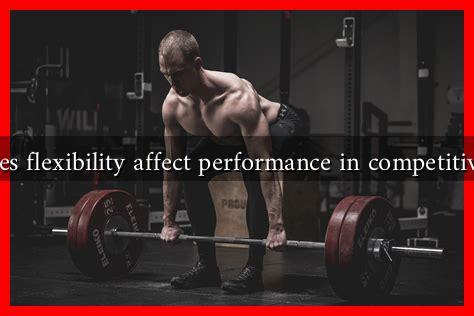-
Table of Contents
How Does Flexibility Affect Performance in Competitive Sports?
Flexibility is often an overlooked aspect of athletic training, yet it plays a crucial role in enhancing performance in competitive sports. Defined as the range of motion available at a joint, flexibility can significantly influence an athlete’s ability to perform, recover, and prevent injuries. This article explores the multifaceted impact of flexibility on sports performance, supported by research, examples, and expert opinions.
The Importance of Flexibility in Sports
Flexibility is essential for athletes across various sports disciplines. It contributes to several key performance factors:
- Injury Prevention: Increased flexibility can help reduce the risk of injuries by allowing joints and muscles to move through their full range of motion without strain.
- Improved Performance: Athletes with greater flexibility can execute movements more efficiently, leading to enhanced performance in their respective sports.
- Better Recovery: Flexibility training can aid in muscle recovery post-exercise, reducing soreness and improving overall athletic longevity.
Flexibility and Injury Prevention
Injuries are a common concern in competitive sports, and flexibility training can be a proactive measure to mitigate this risk. Research indicates that athletes with higher flexibility levels are less prone to injuries such as strains and sprains. A study published in the Journal of Sports Medicine found that athletes who engaged in regular flexibility training experienced a 30% reduction in injury rates compared to those who did not.
For example, in sports like gymnastics and dance, where extreme ranges of motion are required, flexibility is paramount. Gymnasts often incorporate extensive stretching routines to maintain their flexibility, which allows them to perform complex routines with grace and precision. Conversely, a lack of flexibility can lead to injuries that may sideline athletes for extended periods.
Flexibility and Performance Enhancement
Flexibility directly influences an athlete’s performance capabilities. In sports that require explosive movements, such as sprinting or jumping, flexibility can enhance power output. A study conducted by the American College of Sports Medicine found that athletes with greater hip flexor flexibility demonstrated improved sprinting times and vertical jump heights.
Moreover, flexibility allows for better biomechanics during athletic movements. For instance, a soccer player with flexible hamstrings can achieve a higher kick without straining the muscle, leading to more effective ball control and shooting accuracy. Similarly, swimmers benefit from flexibility in their shoulders and hips, enabling them to achieve optimal stroke mechanics.
Flexibility Training Techniques
To reap the benefits of flexibility, athletes should incorporate various training techniques into their routines:
- Static Stretching: Involves holding a stretch for a prolonged period, typically 15-60 seconds, to improve overall flexibility.
- Dynamic Stretching: Involves moving parts of the body through a full range of motion, often used as a warm-up before training or competition.
- Proprioceptive Neuromuscular Facilitation (PNF): A more advanced technique that combines stretching and contracting of the muscle group being targeted.
Incorporating these techniques into a training regimen can lead to significant improvements in flexibility and, consequently, athletic performance.
Conclusion
Flexibility is a vital component of athletic performance that should not be underestimated. Its role in injury prevention, performance enhancement, and recovery is well-documented and supported by research. Athletes who prioritize flexibility training can expect to see improvements in their overall performance and a reduction in injury risk. As competitive sports continue to evolve, the importance of flexibility will remain a cornerstone of effective training regimens. By integrating flexibility training into their routines, athletes can unlock their full potential and achieve greater success in their respective sports.


